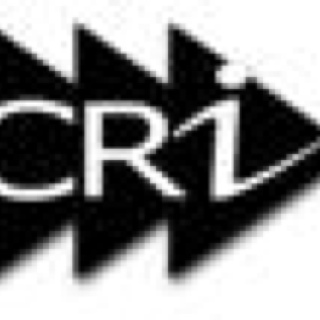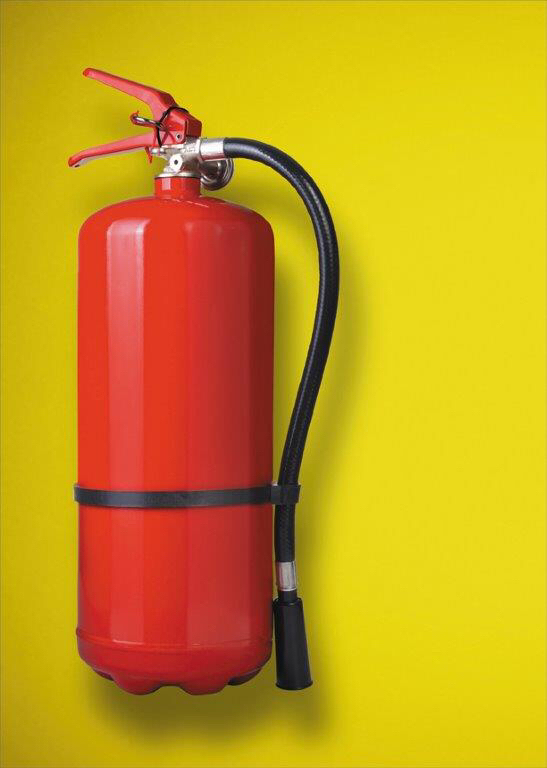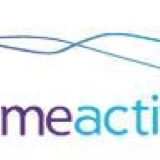Information
-
Document No.
-
Audit Title
-
Client / Site
-
Conducted on
-
Prepared by
-
Location
-
Personnel
Identifying sources of ignition
-
Do work activities involve hot work e.g. incineration, welding, flame cutting, cooking or the use of ovens
-
Replace the work process with one that reduces the potential for ignition? (e.g. replace a hot work method with one that does not employ flames or heat) If this cannot be achieved implement a Hot Work Permit system
-
Are there fluorescent light tubes, light bulbs and fittings near combustible materials?
-
Reposition light units to reduce the risk of contact with combustible materials or move combustible materials away from light fittings
-
Are portable heaters used in the workplace?
-
Replace radiant heaters and those employing flames with fixed convector heaters or central heating
-
Are multi-point adapters or trailing socket extension leads used with electrical appliances?
-
Install additional electrical socket outlets?
-
Are electrical extension leads plugged into adapters or other extension leads?
-
Provide and maintain protective devices such as residual current devices RCDs and thermostats
-
Are portable electrical appliances faulty or damaged?
-
Are the appliances inspected & tested regularly?
-
Ensure that portable appliances are inspected and tested regularly
-
Is the building electrical installation inspected & tested periodically?
-
Are there any faults with the building electrical installation
-
Ensure that the building electrical wiring is inspected and tested regularly
-
Is smoking permitted in the workplace?
-
Designate an area where smoking is permitted and provide suitable furniture adequate number of ashtrays
-
Is arson a potential problem?
-
Provide and maintain appropriate security measures against arson. Ensure combustible waste materials are removed from the grounds of the site
-
Are there any other potential sources of heat in the workplace? If so what are they?
-
Other Sources of Heat
Identifying Combustible Materials
-
Do your work processes involve the use of combustible materials such as paper, card or plastics?
-
Replace any of the combustible materials used in the work process with non-combustible alternative
-
Are bulk quantities of combustible materials (raw materials, finished goods or waste) kept in the work place?
-
Reduce the amounts of combustible materials stored in the premises?
-
Are large amounts of textiles and furniture (particularly furniture with large amounts of foam padding) displayed or stored in the work place?
-
Store combustible materials in fire-resisting stores or enclosures away from sources of ignition
-
Are items of furniture damaged with padding exposed?
-
Replace or repair damaged furniture
-
Are there large notice boards on escape routes with bundles of loose a papers hanging from them?
-
Reduce the size of notice boards and the amount of paper hanging from them
-
Are more than 20% of the walls covered with combustible linings such as hardboard, chipboard, plastic tiles or flock wallpaper?
-
Remove combustible wall linings or replace them with more suitable materials
-
Is the ceiling covered with polystyrene tiles?
-
Remove combustible ceilings
-
Are any combustible artificial foliage or plants used to decorate the work place?
-
Introduce real plants or fire-resistant foliage for decorative purposes
-
Are there displays involving combustible materials and panels on escape routes or elsewhere?
-
Limit the size of displays and site them away from the main escape routes
-
Are combustible decorations hung at any time?
-
Prohibit the hanging of combustible decorations, especially near light fittings
-
Are there quantities of combustible waste in the area?
-
Improve housekeeping and the arrangements for disposal and waste
-
Are paper or other combustible materials in the workplace? If so what are they?
-
Remove and dispose of packaging
Identifying Flammable Liquids and Gases
-
Are stocks of flammable liquids for use in work processes kept in the work place?
-
Reduce the volume of flammable liquids that are kept in the work place
-
Are containers of flammable liquids left open, without their tops on?
-
Ensure that all containers are kept closed when not in use
-
Are flammable liquids kept in the workplace to be used by cleaning or maintenance staff?
-
Reduce, remove or replace the flammable liquids used by cleaners and maintenance staff
-
Are there quantities of flammable liquids kept for any other purposes? If so what are they?
-
Replace a flammable liquid or solvent with a non-flammable alternative
-
Is natural gas used in a manufacturing process or to heat the building? If so have they been serviced and maintained?
-
Ensure that gas- fuelled equipment is serviced and maintained regularly
-
Are cylinders of flammable gases used or stored in the premises?
-
Reduce the numbers of cylinders of flammable and non-flammable gases that are kept in the workplace
-
Are cylinders of other gases, such as air or oxygen, used stored in the premises?
-
Reduce the numbers of cylinders of flammable and non-flammable gases that are kept in the workplace
-
Are aerosol cans filled or stored in the premises?
-
Reduce the number of aerosol cans stored in the premises
Replace aerosol cans, especially those which use butane or propane as the propellant with less hazardous productsEnsure that if it is necessary to store large quantities of aerosol cans that they are kept in purpose-built cages -
Are there any other forms of compressed gas used or stored in the premises? If so what are they?
Identifying Structural Features that Could Lead to the Spread of Fire
-
Are stocks of raw materials and finished products separated from the work place by a fire-resistant structure?
-
Separate stocks of raw materials and finished products from the workplace by a fire-resistant structure
-
Are the compartments enclosed by a fire-resisting structure?
-
Divide voids beneath the floors
-
Are all holes in compartment walls, ceilings and floors around services such as pipes and cables fire stopped?
-
Fire stop all holes around services to the same standard as the fire resistance of the element of constructions in which they are situated
-
Have dampers been installed in ductwork where it passes through compartment walls, floors and ceilings?
-
Install dampers in ducts in line with compartment walls
-
Are holes in the floors and ceilings of vertical service ducts or cupboards fire stopped?
-
Fire stop holes in ceilings and floors of vertical service ducts in cupboards
-
Are there undivided voids beneath the floor?
-
Divide voids beneath the floors
-
Are there undivided voids above the ceiling?
-
Divide voids above the ceilings
-
Are there voids behind panelling or other features that could lead to a fire spreading to the floor above?
-
Fire stops in hidden areas such as those behind panelling
-
Are there any other features that could lead to the spread of no flames or smoke in the event of fire? If so what are they?
Identifying people who could be at risk
-
Do people sleep in the work place?
-
Is there a large number of staff and visiting public in the work place?
-
Can you provide a sufficient number of trained staff to ensure a speedy and orderly evacuation if there is a large number of people present, particularly members of the public
-
Will people be unfamiliar with the layout of the building and the escape routes?
-
Implement safe evacuation arrangements for people unfamiliar with the building layout & escape routes
-
Is the workplace used or visited regularly by people whose mobility is impaired or by people with other forms of disability?
-
Ensure that the escape routes are suitable for the people who have to use them and sufficient number of people to assist in the evacuation
-
Do people work in remote areas of the premises?
-
Ensure that there are means for people working in remote areas to be sufficiently protected (or remote) from any fire risk and provided with its own means of escape and a means of communication
-
Are contractors and maintenance workers aware of the dangers imposed by fire?
-
Implement a process for making contractors and maintenance workers aware of the dangers of fire
-
Do any staff work in areas where there is a high risk of a fire occurring ?
-
Implement training for people at work who are exposed to a high risk of fire as appropriate to the hazards and In the action to take in the event of fire
-
Are there any other factors, which put people in the building at risk? If so what are they?
Compensating Features
-
In the case of small workplaces, can the work activity be arranged so that any outbreak of fire can be seen immediately by people present?
-
Can an automatic fire detection and alarm system be provided?
-
Can an automatic sprinkler or other suitable fixed fire installation be provided?
-
Can smoke control be provided?
-
Can the source of ignition be contained by providing fire-resisting walls, doors or shutters?
Fire precautions in the workplace
-
Where escape lighting is installed, is it in working order and maintained regularly?
-
Emergency lighting to be in working order and maintained regularly by a competent person
-
Is the fire alarm system in working order?
-
Fire alarm system to be brought into working order by a competent person
-
Is the fire alarm system checked weekly?
-
Carry out weekly checks of the fire alarm system by setting off a different call point each week
-
Can the fire alarm be raised without placing anyone in danger?
-
Ensure that when raised the fire alarm system does not place anyone in danger
-
Are the fire alarm call points clearly visible and unobstructed?
-
Ensure all alarm call points are clearly visible, unobstructed and labelled
-
Are there an adequate number of fire extinguishers available?
-
Provide additional fire extinguishers where inadequate
-
Is the fire fighting equipment located suitably and ready for use?
-
Ensure that all fire fighting equipment is suitably located and the location bears the correct signage for the extinguisher type
-
Is the equipment serviced annually by a competent company or person?
-
Employ a competent contractor to service the equipment annually
-
Are any fire or smoke detection systems installed and are they in working order and tested regularly?
-
Ensure that heat and smoke detectors are tested regularly by a competent person
-
Add drawing
Action Plan
001 Corrective Action
002 Corrective Action
003 Corrective Action
004 Corrective Action
005 Corrective Action
006 Corrective Action
007 Corrective Action
008 Corrective Action
009 Corrective Action
010 Corrective Action
011 Corrective Action
012 Corrective Action
013 Corrective Action
014 Corrective Action
015 Corrective Action
-
Add signature












